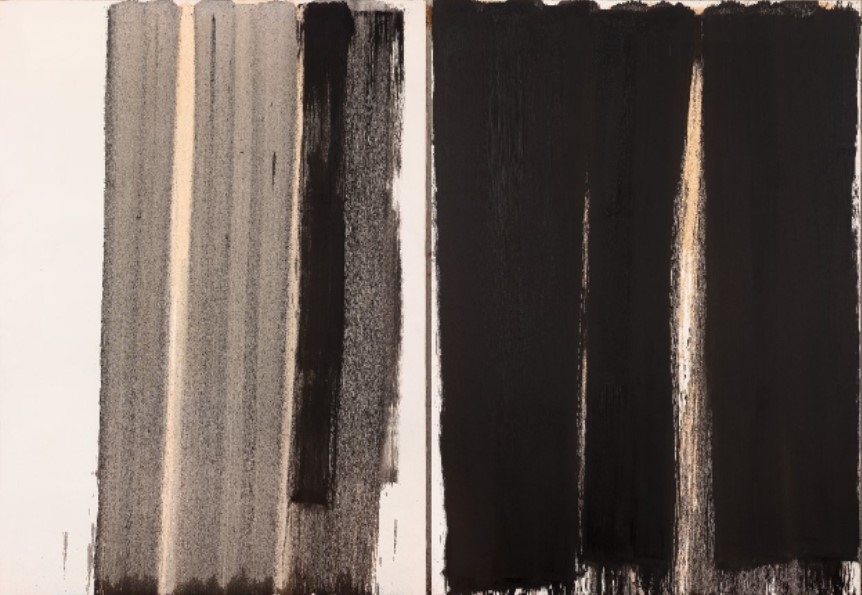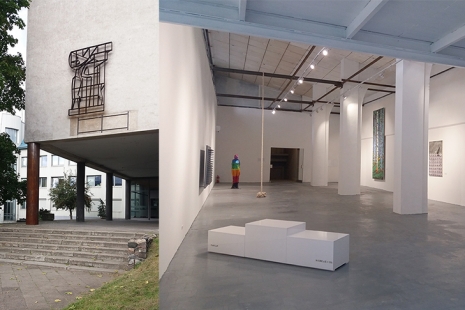Songs of Venta River is a symbolic and very personal name. The river Venta is flowing in a rocky channel through Čerapas’ hometown of Papilė. This metaphor encompasses the stream of memory, with its irreversible losses and the experience of disappearing present – it works like the incessant state of exile. Engaging in a discussion with the painting itself, Čerapas is persistently developing the project of rethinking his autobiography, which he calls a commitment, an artistic initiation that gives meaning to the wholecreative activity. At this stage, this aspiration is even more pronounced, lying at the heart of the painting method itself. Čerapas’ scribbling of the canvases continues unceasingly in time, but paradoxically proclaims the repetition of the flow and the verticality of time, as the overcoming and survival of change. The rhythms of cascades are occluded, concentrated inside, obscuring the deep. Outside, there is paint on the surface, on which a whiff of an immense volume approaching from the depths is imprinted. I paint not the meaning, but the volume of plastic sound, and it seems to me that the timbre of painting is more important than imaginary meanings (H.Čerapas).
Čerapas’ work is striking not only for its mastery of pictorial matter but also for its equally significant motivation that awakens from the post-painterly stupor. The series of canvases reflect a deep insight into the prehistory of abstract expressionism, the unity of idea and form that lies within the origin of modernist painting, and expresses the link between painting and thinking (image-construction-surface – self created painting formula based on Matisse-Mondrian-Morandi). Here, the extraction of volume most emphasises the existence in the painting itself, which is not verbalised in any way, but every time requires the faithful repetition of the act of painting – it is like an expression of spiritual alertness. Čerapas is noticeably moving in the direction of such a radical abstraction, away from the spontaneous action painting that was capturing illusions of temporal experience. The visionary pro-motifs of his reality: Venta (thresholds), Iron Road (rails and sleepers), abandoned and collapsing cooperative warehouse in Papilė (imagery of house-sky dome) are the universum-aequilibrium that he creates.
Agnė Kulbytė
Curators of the exhibition: Kristijona Čerapaitė, Agnė Kulbytė





